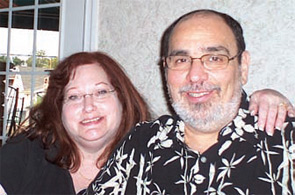Editor’s Note: This month, “From the College” continues its look at advocacy from the viewpoint of ACR and ARHP advocates. Below, Susan Leigh, a rheumatology patient advocate from Delaware, explains how her advocacy efforts have taken her from a patient to a participant in the process.
Earlier this year, I was privileged to be part of the ACR’s Advocates for Arthritis advocacy visit. My rheumatologist recommended that I apply for the event, and I was thrilled when I was accepted, even though my acceptance wasn’t necessarily competitive (I was the only patient representative from Delaware).
Public advocacy has long been the ideal in my family. Begun by my grandfather who was an immigrant from Belarus, carried on by my father who was an educator in poverty-stricken Brooklyn, and passed down to me—a former inner-city schoolteacher who was forced to retire after 25 years of teaching due to worsening lupus. (I never resented my disease as much as when I was told that I could no longer teach.)

One Advocate, One Story, Two Big Moments
My experiences at Advocates for Arthritis exceeded my hopes. Monday afternoon was an informative training session. I knew that protocol would be important on Capitol Hill if we wanted to be heard, and I was glad to be given tips on how to introduce our cause and make our points effectively. The cocktail hour and dinner following were great—what lupus patient wouldn’t want to be in a room with 80 rheumatologists?
The next day, we met in our teams and began visiting offices on Capitol Hill. I was disheartened to see how many other groups were looking for a congressman’s or senator’s ear. At times, it was hard to push through the crowd to get into an office, and I often wondered how we make would make ourselves stand out and heard. It wasn’t until the day progressed (and the weeks following, as it often pans out in lobbying) that I found the stories we shared would make a difference.
Being the only patient from Delaware, I was assigned to the Pennsylvania team, and we met with several members of Congress that morning. In the afternoon, I decided to strike out on my own and face the Delaware representatives in their dens, alone. What followed was nothing short of incredible. At Congressman Mike Castle’s (R-DE) office, I began to meet with a legislative aide who was not involved in healthcare. After 10 minutes of conversation, she said she felt the aide on health issues “had” to meet me.